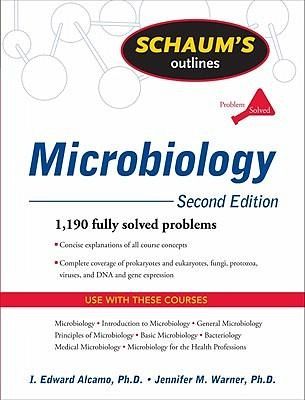
Schaum's Outline of Microbiology
Versandkostenfrei!
Versandfertig in 2-4 Wochen

PAYBACK Punkte
18 °P sammeln!




Schaum's Outline of Microbiology provides a systematic review of microbiology with clear and concise explanations, accompanied by numerous exercises.
I. Edward Alcamo (Farmingdale, NY) is a professor of biology at the State University of New York at Farmingdale. He has taught at the college level for 30-plus years, specializing in microbiology for health science students. Dr. Alcamo has authored several books including Fundamentals of Microbiology, AIDS: The Biological Basis, The Microbiology Coloring Book, DNA Technology: The Awesome Skill, Anatomy and Physiology the Easy Way, and The Anatomy Coloring Workbook. He has also been honored for excellence in teaching by the State University of New York and the National Association of Biology Teachers. Dr. Alcamo is a member of numerous scientific organizations and a regular contributor to various scientific journals. Jennifer Warner (Charlotte, NC) is an instructor of biology at the University of North Carolina, Greensboro. She is a coauthor of McGraw-Hill's MCAT and McGraw-Hill's PCAT.
Produktdetails
- Verlag: McGraw-Hill Education - Europe
- 2 ed
- Seitenzahl: 352
- Erscheinungstermin: 1. September 2009
- Englisch
- Abmessung: 276mm x 207mm x 24mm
- Gewicht: 858g
- ISBN-13: 9780071623261
- ISBN-10: 0071623264
- Artikelnr.: 26486064
Herstellerkennzeichnung
Libri GmbH
Europaallee 1
36244 Bad Hersfeld
gpsr@libri.de
Für dieses Produkt wurde noch keine Bewertung abgegeben. Wir würden uns sehr freuen, wenn du die erste Bewertung schreibst!
Eine Bewertung schreiben
Eine Bewertung schreiben
Andere Kunden interessierten sich für











